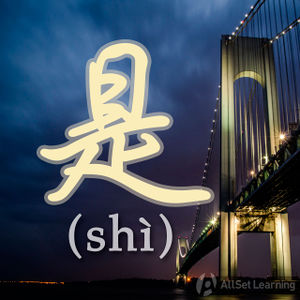Difference between revisions of "The "shi... de" construction for indicating purpose"
| Line 1: | Line 1: | ||
{{Grammar Box}} | {{Grammar Box}} | ||
| − | |||
There are many ways to explain why you are doing something or what's the use of things. This article will explain another way to do that, and it just happens to involve "是⋯⋯的." This isn't to say that you can't make these sentences without using "是" and "的" but this can help emphasize why you are doing something or what's the use of thing, giving your sentence a little more kick. | There are many ways to explain why you are doing something or what's the use of things. This article will explain another way to do that, and it just happens to involve "是⋯⋯的." This isn't to say that you can't make these sentences without using "是" and "的" but this can help emphasize why you are doing something or what's the use of thing, giving your sentence a little more kick. | ||
| Line 35: | Line 34: | ||
Thing + 是 + 用来 + [Verb Phrase] + 的 | Thing + 是 + 用来 + [Verb Phrase] + 的 | ||
</div> | </div> | ||
| + | |||
| + | or | ||
<div class="jiegou"> | <div class="jiegou"> | ||
| Line 52: | Line 53: | ||
</div> | </div> | ||
| − | == See | + | == See also == |
*[[Uses of "shi⋯⋯ de"]] | *[[Uses of "shi⋯⋯ de"]] | ||
| Line 60: | Line 61: | ||
=== Books === | === Books === | ||
| − | |||
| − | |||
[[Category:Structures]] | [[Category:Structures]] | ||
{{Basic Grammar|是|B1|是⋯⋯ 的|我 <em>是</em> 来 上海 旅游 <em>的</em> 。|grammar point|ASG0UFR4}} | {{Basic Grammar|是|B1|是⋯⋯ 的|我 <em>是</em> 来 上海 旅游 <em>的</em> 。|grammar point|ASG0UFR4}} | ||
| + | {{Rel char|的}} | ||
{{Similar|的 (modal particle)}} | {{Similar|的 (modal particle)}} | ||
{{Similar|Uses of "shi" with "de")}} | {{Similar|Uses of "shi" with "de")}} | ||
| Line 71: | Line 71: | ||
{{Used for|Emphasizing}} | {{Used for|Emphasizing}} | ||
{{Used for|Expressing purpose}} | {{Used for|Expressing purpose}} | ||
| − | |||
{{Structure|Sentence Patterns}} | {{Structure|Sentence Patterns}} | ||
Revision as of 06:55, 13 December 2017
-
Level
-
Similar to
-
Used for
-
Keywords
There are many ways to explain why you are doing something or what's the use of things. This article will explain another way to do that, and it just happens to involve "是⋯⋯的." This isn't to say that you can't make these sentences without using "是" and "的" but this can help emphasize why you are doing something or what's the use of thing, giving your sentence a little more kick.
Contents
Person as Subject
Structure
If the subject is a person, there is often a "来" or "去" after the "是," indicating direction like "coming here" or "going there."
Person + 是 + 来 / 去 + [Verb Phrase] + 的
Examples
- 我 是 来 旅游 的 。I came for traveling.
- 我们 都 是 去 出差 的 。We are all going on business trips.
- 他们 都 是 来 实习 的 。They all came here to do an internship.
- 你 真的 是 来 帮 我们的 吗 ?Are you here to help us? Really?
- 我们 不 是 去 玩 的 ,是 去 做 调查 的 。We're not going to hang out with people. Instead, we're there to do research.
Things as Subject
Structure
If the subject is a thing, "用来" is often used. Look at the examples below for some more clarification.
Thing + 是 + 用来 + [Verb Phrase] + 的
or
Thing + 是 + 给 + Person + [Verb Phrase] + 的
Examples
- 这 种 菜 是 用来 做 汤 的 。This kind of vegetable is for making soup.
- 这 个 房间 是 给 客人 住 的 。This room is for our guest to live in.
- 这些 钱 是 给孩子 上 大学 的 。This money is for our children going to college.
- 这些 礼物 是 给 客户 准备 的 。These presents are prepared for the clients.
- 钱 是 用来 花 的 ,不 是 用来 省的 。Money is for spending, not for saving.



